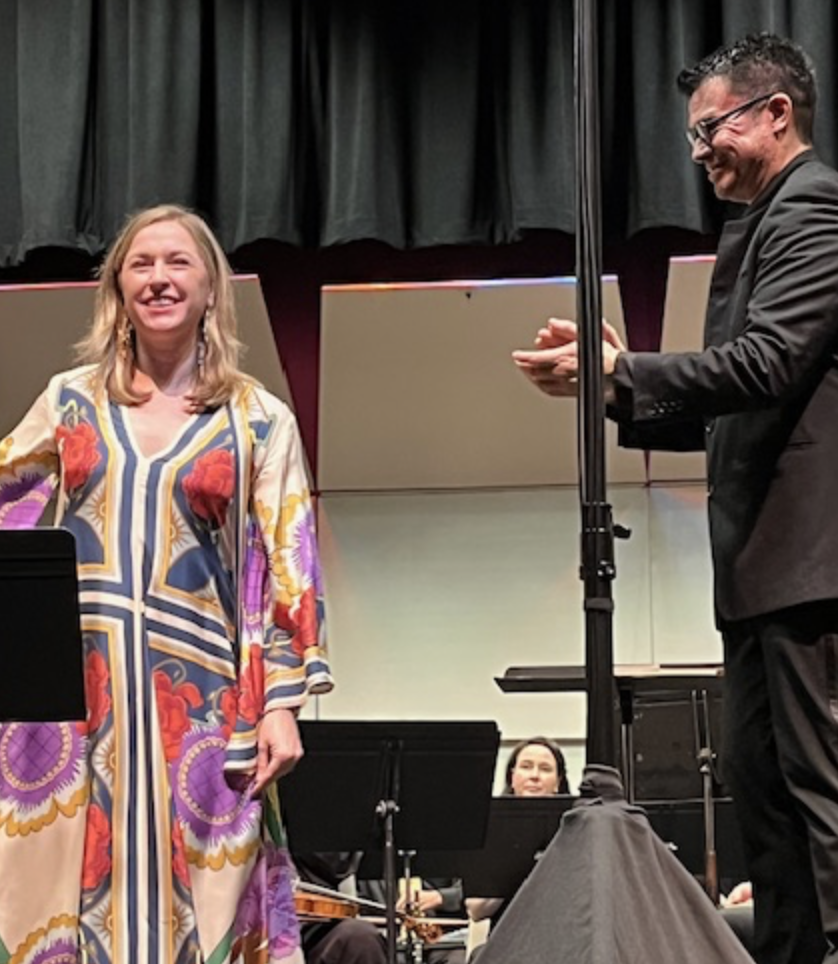|
Symphony
FROM THE NEW WORLD TO THE OLD WORLD
by Peter Lert
Saturday, June 14, 2025
Chamber
MC2 DUO RECITAL CLOSES 222'S SEASON
by Terry McNeill
Saturday, June 14, 2025
Choral and Vocal
CANTIAMO SONOMA'S LUSCIOUS A CAPELLA SINGING IN SEASON ENDING CONCERT
by Pamela Hicks Gailey
Sunday, June 8, 2025
Symphony
SRS SEASON ENDS WITH RESOUNDING TA-TA-TA-BANG
by Terry McNeill
Sunday, June 1, 2025
Symphony
YOUTHFUL VIRTUOSITY ON DISPLAY AT USO'S MAY CONCERTS
by Peter Lert
Saturday, May 17, 2025
Symphony
MYSTICAL PLANETS AND LIVELY GERSHWIN ORTIZ AT FINAL SRS CONCERT
by Peter Lert
Sunday, May 4, 2025
Symphony
VSO'S CONCERT MUSIC OF TIME, MUSIC OF PLACE
by Peter Lert
Sunday, April 27, 2025
VOCAL ELEGANCE AND FIRE AT THE 222'S RECITAL APRIL 26
by Pamela Hicks Gailey
Saturday, April 26, 2025
CANTIAMO SONOMA SINGS AN INSPIRED GOOD FRIDAY MOZART REQUIEM CONCERT
by Pamela Hicks Gailey
Friday, April 18, 2025
DRAMATIC SHOSTAKOVICH SYMPHONY CLOSES PHILHARMONIC'S 25TH SEASON
by Terry McNeill
Sunday, April 13, 2025
|
 |
 Chloe Tula and Norman Gamboa Feb. 2 |
ESPANA SEGURO AT SO CO PHIL'S JACKSON THEATER CONCERT
by Terry McNeill
Sunday, February 2, 2025
Calling a Sonoma Philharmonic program “lightweight” might be accurate related to their recent powerhouse concerts of Shostakovich and the Frankenstein movie score adaption, but that would do a disservice to the Feb. 2 concert in the Jackson Theater of music with a Spanish flair.
Beginning with a seven dance ballet suite from Massenet’s El Cid opera, the work’s character was far removed from contemporary Tchaikovsky, Fauré and Glazunov ballet writing. Conductor Norman Gamboa drew from his orchestra many contrasting moods, leading with the slow, slinky and even lively Andalouse waltz and sparkling flute (Debra Scheuerman) and pizzicato string playing in the fourth dance (Aubade).
Brian Thompson’s lovely English horn solo was heard in the Madrilène movement, and duos of harp (Christina Goodwin), flute and cellist Anne-Marie Fassler. More operatic character was heard in the Aragonaise movement and martial low string growling in the Catalane. A set of ravishing English horn, harp and flute music came in the Madrilène movement.
Mr. Gamboa had his hands full in the concluding Navarraise where he guided the movement’s complex rhythms, many tempo changes, false cadences and triumphant climaxes that at times bordered on band music. Exciting indeed.
Rodrigo’s popular Concieto de Aranjuez closed the first half, with solo harpist Chole Tula. Over 25 minutes Ms. Tula, playing from score and without amplification, brought a fresh approach to the music, originally written in 1939 for guitar and transcribed in 1974. The offbeat rhythms and catchy themes were captured by the soloist with chirpy wind playing (Chris Krive’s oboe) and varied dynamics in the harp’s scale passages.
The famous laconic Adagio began with four harp arpeggios with Mr. Thompson’s English mellow horn stating the haunting theme, then picked up by the harp line. Dynamic control is critical here and Ms. Tula had it in hand. At the movement’s famed tremolo chord climax the absence of the guitar was apparent, as the harp lacks the necessary ferocity demanded by the music. The menacing sonority of the Madrid corrida was wanting.
Section attacks and catchy tune statements were excellent in the Allegro finale, the many modulations highlighting folk music references with Ms. Tula playing mostly in her instrument’s upper register. A loud ovation from the audience of 300 brought two curtain calls but no encore. The expected flowing Debussy Arabesque in E or a Salzedo etude were alas unheard.
Turina’s Sinfonia Sevillana completed the program, only becoming Spanish after several minutes. Through this work the Philharmonic’s high strings were especially powerful. Perhaps this was because this reviewer was seated in the second row (usually resident in the balcony), or the more than usual number of violins. In any case, the sound Mr. Gamboa was able to command from the violins was impressive, as was the continual small solos from concertmaster Pam Otsuka.
The Sinfonia is brilliantly scored, particularly in the Fiesta en San Juan de Aznalfarache movement, with the conductor adroitly shaping the rapidly moving phrases that ended in an extended pianissimo, Ms. Otsuka again heard above the ensemble. It was 25 minutes of charismatic Iberian sound.
The Philharmonic’s 25th season concludes April 12 and 13 in Jackson with Villa-Lobos’ Bachianas Brasileiras No. 4 and the powerful Shostakovich D Minor Symphony, Op. 47.
|

